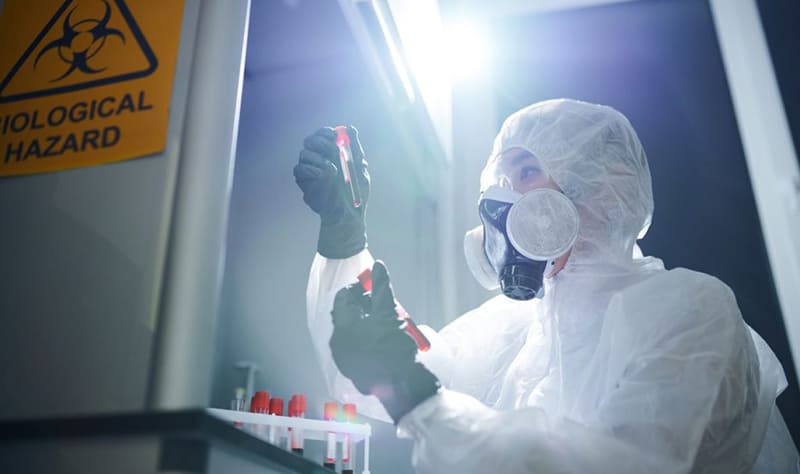How do I choose chemical resistant gloves?

When working with chemicals, it is important to choose the right protective equipment to ensure your safety. Chemical-resistant gloves are an essential component of personal protective equipment (PPE) when working with hazardous chemicals, as they help protect your hands and skin from potential harm. Here are some factors to consider when choosing chemical-resistant gloves.
1、Chemical Resistance
The first thing to consider when choosing chemical-resistant gloves is the level of protection you need. Ensure that the gloves you choose are resistant to the specific chemicals you will be handling. Check the glove's specifications and the safety data sheet (SDS) for the chemicals to be used to determine the appropriate level of resistance.
2、Material
Chemical-resistant gloves are made from a variety of materials, including latex, nitrile, neoprene, PVC, and butyl. Choose a material that is appropriate for the chemicals you will be handling and that provides the necessary dexterity and durability for the task. For example, nitrile gloves are suitable for handling oils, acids, and chemicals, while butyl gloves are recommended for use with ketones, esters, and nitrocompounds.
3、Thickness
The thickness of the gloves affects their level of protection and dexterity. Thicker gloves provide greater protection but may decrease dexterity. Choose the appropriate thickness based on the specific task and chemical being used. For example, if you are handling a highly concentrated chemical, you may need thicker gloves for added protection.

4、Length
The length of the glove is also an important factor to consider. Longer gloves provide more protection to the wrist and forearm, but may be less comfortable and decrease dexterity. Choose the appropriate length based on the specific task and level of protection needed. For example, if you are working with a chemical that can splash, you may need longer gloves for added protection.
5、Size and Fit
Proper fit is important for both comfort and protection. Ensure that the gloves fit well and provide adequate dexterity without being too loose or tight. Consider the size of your hand and the type of task you will be performing when selecting gloves. It is important to try on the gloves before purchasing to ensure a proper fit.
6、ANSI/ISEA Standards
Look for gloves that meet the American National Standards Institute (ANSI) and International Safety Equipment Association (ISEA) standards for chemical-resistant gloves. These standards ensure that the gloves meet specific performance requirements and have been tested for chemical resistance.
7、Durability and Reusability
Consider the durability and reusability of the gloves, especially if you will be using them frequently. Choose gloves that are durable and can withstand multiple uses without compromising their protective properties. Look for gloves that are designed to be reusable and can be washed and disinfected.
In conclusion, choosing the appropriate chemical-resistant gloves requires considering the specific chemicals and tasks involved, as well as factors such as material, thickness, length, size and fit, and compliance with safety standards. It is important to select gloves that provide the appropriate level of protection and comfort for the task at hand to ensure your safety and well-being.










